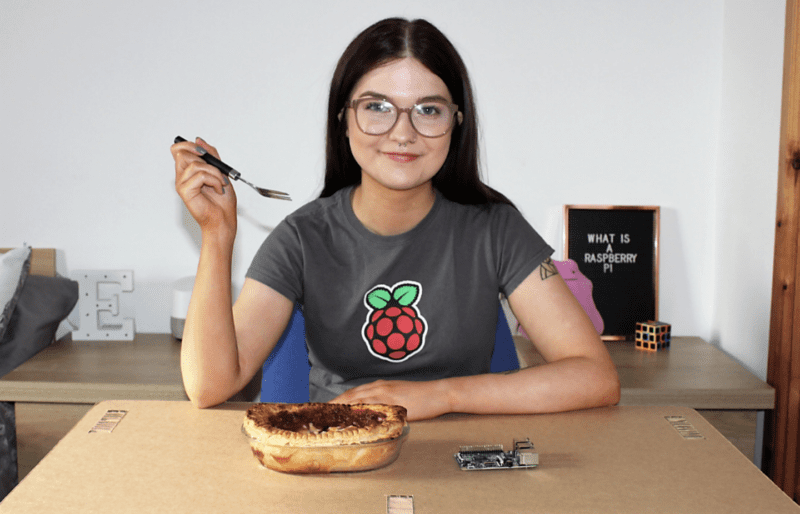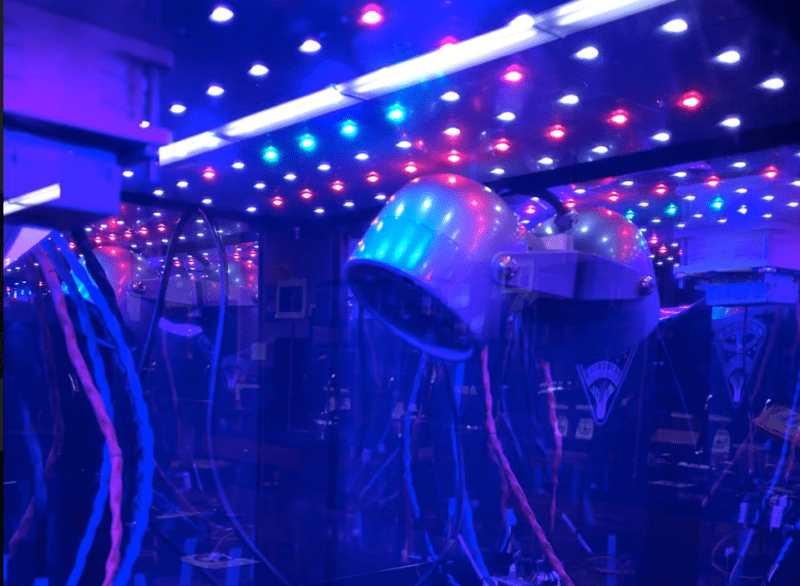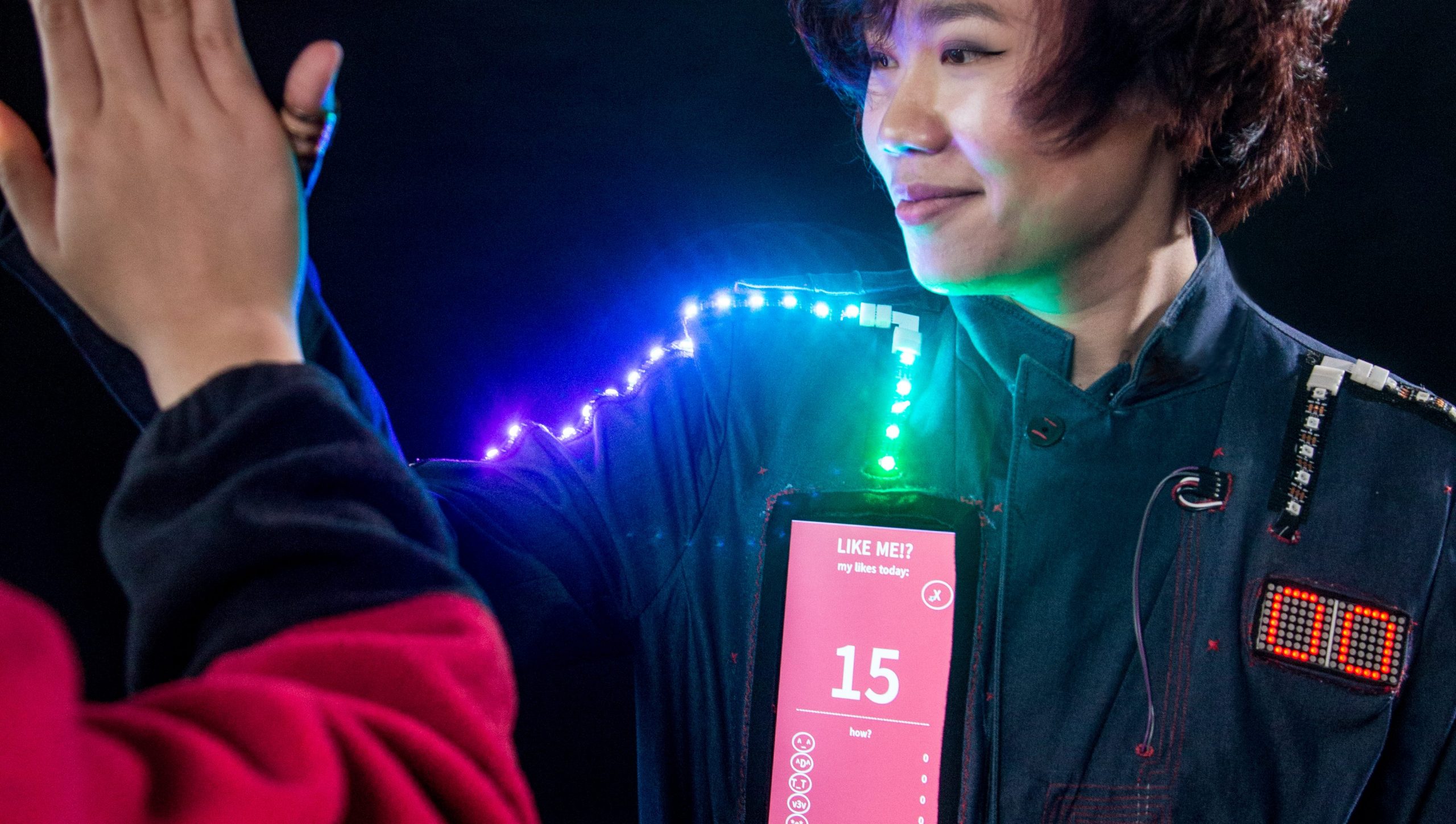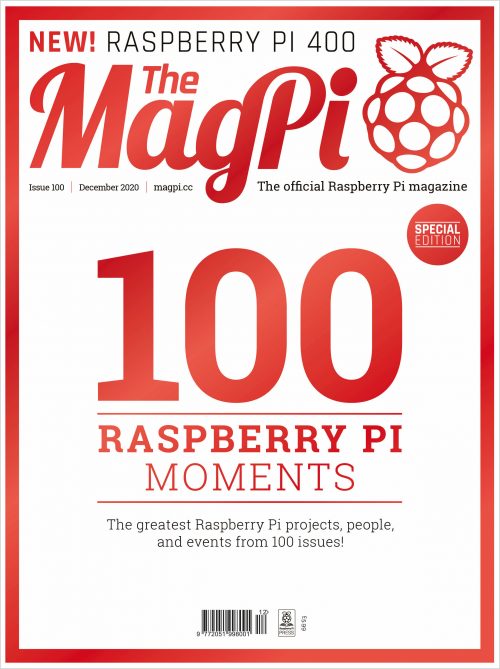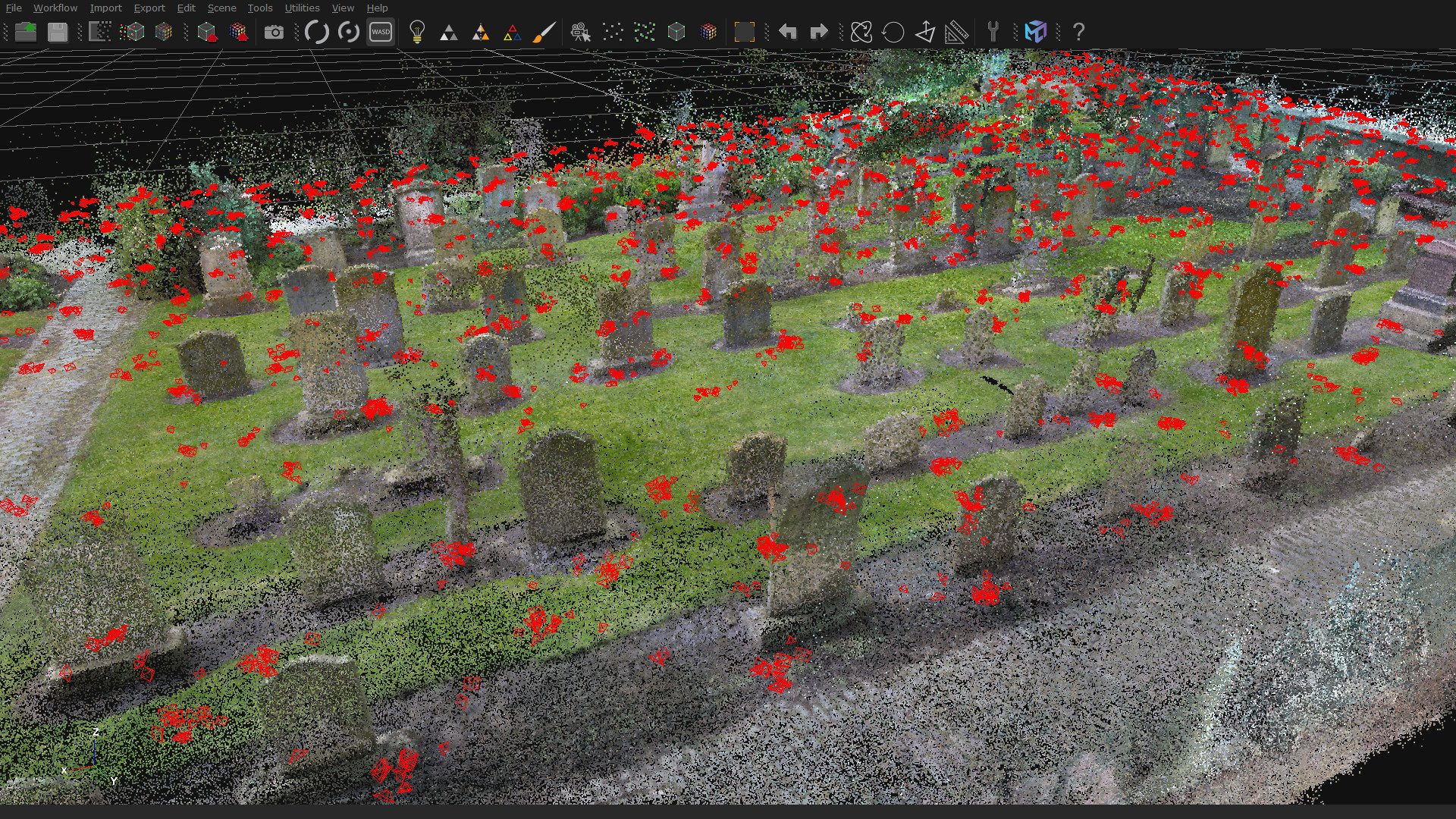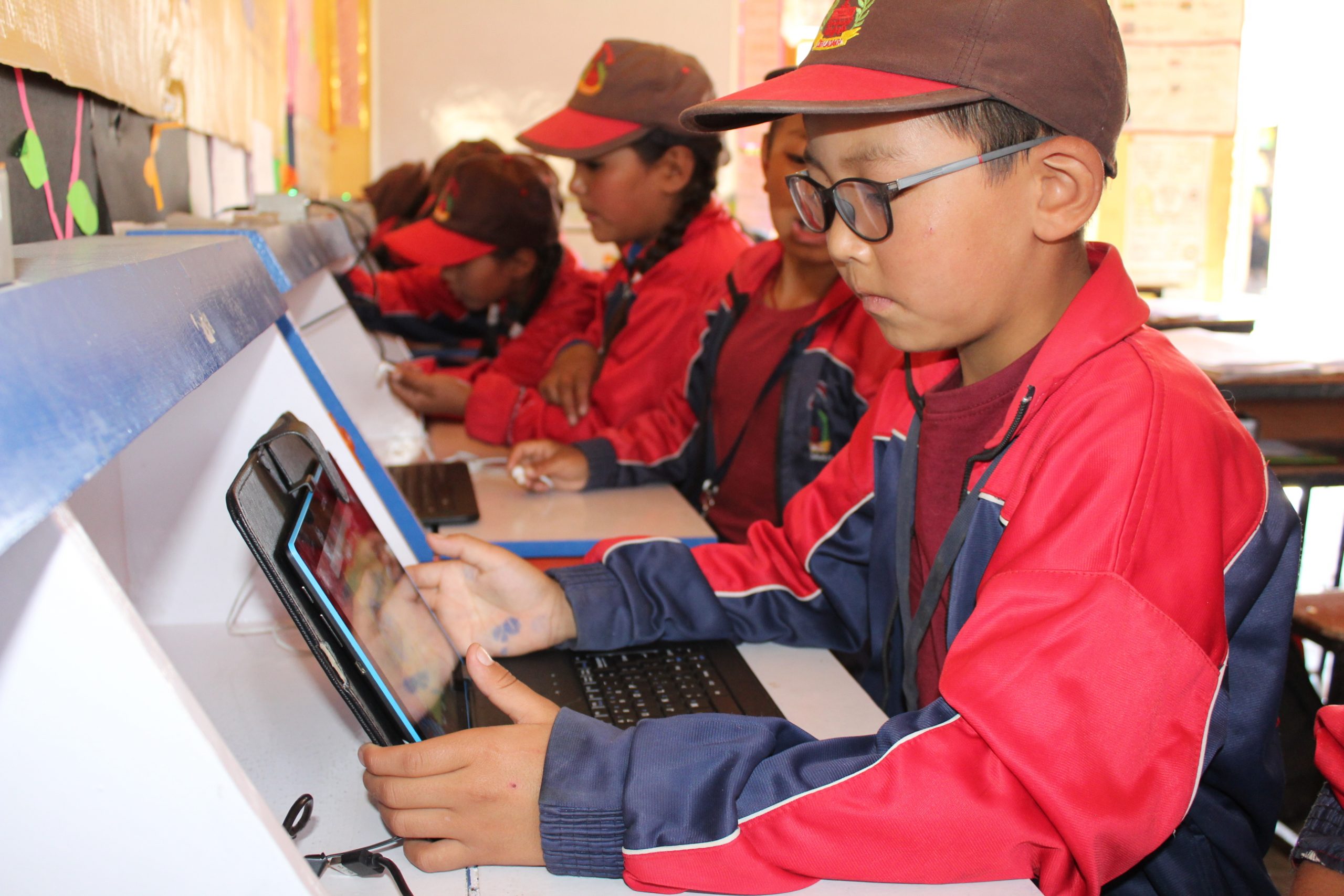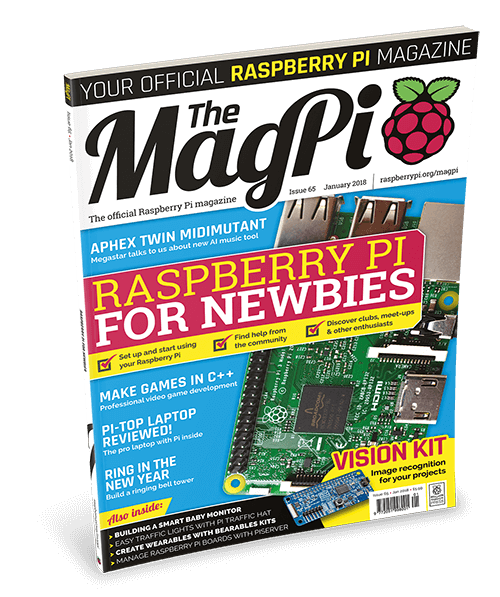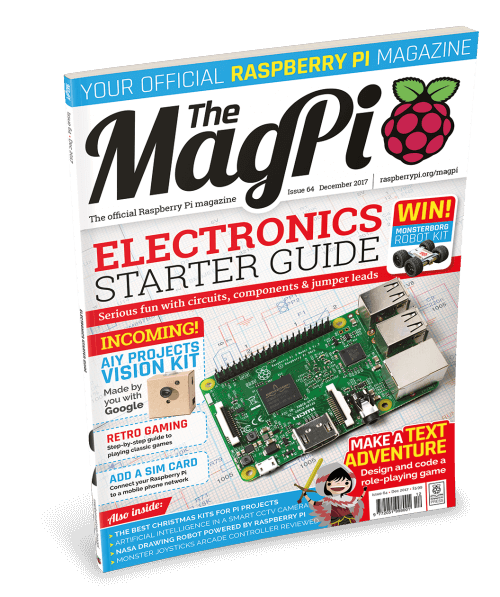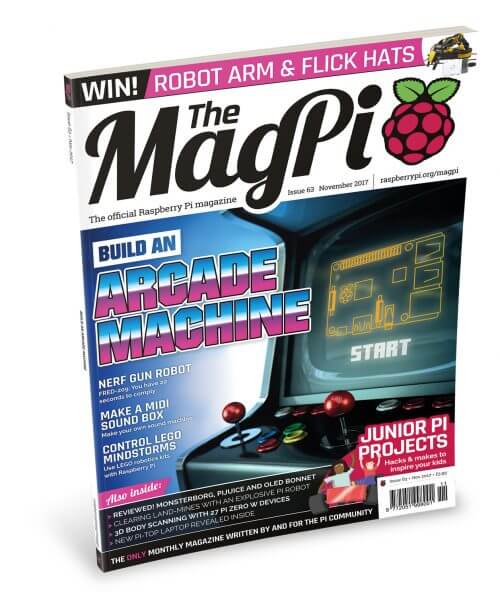Schlagwort: The MagPi Magazine
-

Meet Ellora James
Reading Time: 4 minutesIn the latest issue of The MagPi magazine, we meet the smart young computer scientist behind an exciting new YouTube channel. When did you have that ‘ah-hah’ moment with computing? Ellora James remembers when she had hers. “When I was about 14/15 years old, I was considering taking Computer Science at exam…
-

Star Wars Arcade Cabinet | The MagPi #105
Reading Time: 4 minutesWhy pay over the odds when you can build an accurate replica, and have fun doing it? For the latest issue of The MagPi Magazine, Rob Zwetsloot switches off his targeting computer to have a look. Art had to be rescaled, but it’s been done faithfully Getting the arcade machine of your…
-

Raspberry Pi Zero W turns iPod Classic into Spotify music player
Reading Time: 4 minutesRecreating Apple’s iconic iPod Classic as a Spotify player may seem like sacrilege but it works surprisingly well, finds Rosie Hattersley. Check out the latest issue of The MagPi magazine (pg 8 – 12) for a tutorial to follow if you’d like to create your own. Replacement Raspberry Pi parts laying inside…
-

Kay-Berlin Food Computer | The MagPi #104
Reading Time: 4 minutesIn the latest issue of The MagPi Magazine, out today, Rob Zwetsloot talks to teacher Chris Regini about the incredible project his students are working on. When we think of garden automation, we often think of basic measures like checking soil moisture and temperature. The Kay-Berlin Food Computer, named after student creators…
-

#MonthOfMaking is back in The MagPi 103!
Reading Time: 3 minutesHey folks, Rob from The MagPi here! I hope you’ve been doing well. Despite how it feels, a brand-new March is just around the corner. Here at The MagPi, we like to celebrate March with our annual #MonthOfMaking event, where we want to motivate you to get making. You could make tech…
-

Raspberry Pi engineers on the making of Raspberry Pi Pico | The MagPi 102
Reading Time: 4 minutesIn the latest issue of The MagPi Magazine, on sale now, Gareth Halfacree asks what goes into making Raspberry Pi’s first in-house microcontroller and development board. [youtube https://www.youtube.com/watch?v=o-tRJPCv0GA?feature=oembed&w=500&h=281] “It’s a flexible product and platform,” says Nick Francis, Senior Engineering Manager at Raspberry Pi, when discussing the work the Application-Specific Integrated Circuit (ASIC)…
-

Gifts that last all year round
Reading Time: 3 minutesWhat if you could give the joy of opening a Raspberry Pi–themed gift every single month for a whole year? But what if the thought of wrapping 12 individual things fills you with Scrooge-level dread? Snap up a magazine subscription for one of your nearest and/or dearest and we’ll take care of…
-

100 Raspberry Pi moments
Reading Time: 4 minutesThe official Raspberry Pi magazine turned 100 this month! To celebrate, the greatest Raspberry Pi moments, achievements, and events that The MagPi magazine has ever featured came back for a special 100th issue. 100 Raspberry Pi Moments is a cracking bumper feature (starting on page 32 of issue 100, if you’d like…
-

The MagPi #100: celebrate 100 amazing moments from Raspberry Pi history
Reading Time: 3 minutesHey there, folks, Rob from The MagPi here! I hope you’ve all been doing OK. Today we celebrate the 100th issue of The MagPi, the official Raspberry Pi magazine! Most of you probably know that The MagPi didn’t start off official, though: eight and a half years ago, intrepid community members came…
-

The Howff 3D scanning rig| The MagPi 99
Reading Time: 4 minutesHow do you create a 3D model of a historic graveyard? With eight Raspberry Pi computers, as Rob Zwetsloot discovers in the latest issue of The MagPi magazine, out now. The software builds up the 3D model of the graveyard “In the city centre of Dundee is a historical burial ground, The…
-

Haunted House hacks
Reading Time: 3 minutesSpookify your home in time for Halloween with Rob Zwetsloot and these terror-ific projects! We picked four of our favourites from a much longer feature in the latest issue of The MagPi magazine, so make sure you check it out if you need more Haunted House hacks in your life. Raspberry Pi…
-

17000ft | The MagPi 98
Reading Time: 5 minutesHow do you get internet over three miles up the Himalayas? That’s what the 17000 ft Foundation and Sujata Sahu had to figure out. Rob Zwetsloot reports in the latest issue of the MagPi magazine, out now. Living in more urban areas of the UK, it can be easy to take for…
-

Atomic TV | The MagPi 97
Reading Time: 4 minutesNothing on television worth watching? Ryan Cochran’s TV set is just as visually arresting when it’s turned off, as David Crookes reports in the latest issue of the MagPi magazine, out now. Flat-screen televisions, with their increasingly thin bezels, are designed to put the picture front and centre. Go back a few…
-

(Raspberry) Pi Commander | The MagPi 95
Reading Time: 4 minutesAdrien Castel’s idea of converting an old electronic toy into a retro games machine was no flight of fancy, as David Crookes discovers The 1980s was a golden era for imaginative electronic toys. Children would pester their parents for a Tomytronic 3D or a Nintendo Game & Watch. And they would enviously…
-

Special offer for magazine readers
Reading Time: 2 minutesYou don’t need me to tell you about the unprecedented situation that the world is facing at the moment. We’re all in the same boat, so I won’t say anything about it other than I hope you stay safe and take care of yourself and your loved ones. The other thing I…
-

Upcycle a vintage TV with the Raspberry Pi TV HAT | The MagPi #78
Reading Time: 4 minutesWhen Martin Mander’s portable Hitachi television was manufactured in 1975, there were just three UK channels and you’d need to leave the comfort of your sofa in order to switch between them. Today, we have multiple viewing options and even a cool Raspberry Pi TV HAT that lets us enjoy DVB-T2 broadcasts…
-

MagPi 76: our updated Raspberry Pi Superguide!
Reading Time: 3 minutesHi folks, Rob from The MagPi here! The holiday season will soon be upon us, and that means a lot of Raspberry Pis will be given as gifts. For all these new Pi users, we thought it was time to update our beginners’ guide for 2019 in issue 76 of The MagPi,…
-

MagPi 65: Newbies Guide, and something brand new!
Reading Time: 3 minutesHey folks, Rob from The MagPi here! We know many people might be getting their very first Raspberry Pi this Christmas, and excitedly wondering “what do I do with it?” While we can’t tell you exactly what to do with your Pi, we can show you how to immerse yourself in the…
-

MagPi 64: get started with electronics
Reading Time: 2 minutesHey folks, Rob here again! You get a double dose of me this month, as today marks the release of The MagPi 64. In this issue we give you a complete electronics starter guide to help you learn how to make circuits that connect to your Raspberry Pi! MAGPI SIXTY-FOOUUUR! Wires, wires…
-

MagPi 63: build the arcade cabinet of your dreams
Reading Time: 2 minutesHi folks, Rob from The MagPi here! Issue 63 is now available, and it’s a huge one: we finally show you how to create the ultimate Raspberry Pi arcade cabinet in our latest detailed tutorial, so get some quarters and your saw ready. Totally awesome video game builds! The 16-page-long arcade machine…
